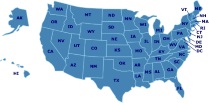Resources
Spell to Write & Read
This teacher's manual, written by a homeschool educator with experience as a professional school teacher and private tutor, shows how to teach reading the "write" way. By phonetically teaching spelling from the start as the backbone for reading, all children can be taught, regardless of learning styles, to read and spell. If your student knows how to read already, this program can improve his or her spelling. Find out more about this product here.
Learning Language Arts Through Literature
Learning Language Arts Through Literature is a fully integrated language arts program that teaches grammar, reading, spelling, vocabulary, writing mechanics, creative writing, thinking skills and more.
Sing, Spell, Read & Write
Sing, Spell, Read & Write is a phonics-based program that uses a 36-step program of carefully sequenced steps to teach reading, writing, and spelling. More product information can be found here.
A Reason For® Spelling
A Reason For® Spelling combines the latest research on how children learn to spell with all the strengths of traditional programs. It teaches highfrequency base words, plus hundreds of other word forms. Values-based stories set the theme each week and help make spelling fun. You'll find product information about A Reason For® Spelling here.
Spelling for the Homeschooled Student
Scripps National Spelling Bee
Scripps National Spelling Bee is the most widely known spelling bee organizer in the world. In general, the program is open to students who have not reached their 16th birthday on or before the date of the national finals and who have not passed beyond the eighth grade at the time of their school finals.
When Should I Start Teaching Spelling in Homeschool?
Spelling is more than just associating letters with sounds and deciphering them. Spelling is an essential element to writing clearly and convincingly. Some programs start testing children right away like at Kindergarten level. However, instead of teaching spelling, a program may add the element of testing.
Teaching spelling is one thing and testing spelling is quite another thing.
How I Teach a Large Family in a Relaxed, Classical Way: Language Arts
Tips for teaching language arts (writing, grammar, handwriting) in a large family.
PBS Kids Spelling Games
Your kids can practice spelling with these online games.
How to Teach Spelling in Your Homeschool
Homeschooling is a great opportunity because you can choose the homeschool spelling curriculum that matches your child's needs. As your child's teacher, you decide the method of instruction, how frequent the lessons are, the pace, the intensity, and the amount of review. No one else can do that for your child! For all children, from those needing remedial help to those who are gifted in this area, individualized spelling instruction is an unbeatable choice.
Featured Resources
As an Amazon Associate, we earn from qualifying purchases. We get commissions for purchases made through links on this site.
Teach Your Own: The John Holt Book Of Homeschooling
The classic work on teaching children at home, updated for today's new laws, new lifestyles, and a new generation of homeschooling parents. Today more than one and a half million children are being taught at home by their own parents. In this expanded edition of the book that helped launch the whole movement, Pat Farenga has distilled John Holt's timeless understanding of the ways children come to understand the world and added up-to-the-moment practical advice. Rather than proposing that pare...
Safe Young Drivers: A Guide for Parents and Teens
Sixteen is by far the most dangerous age on the road. A 16-year-old is twelve times more likely than older drivers to die in a crash as a single occupant. Put two young teens in a vehicle, and the odds of death and injury nearly double. Despite these sobering facts, the procedure for obtaining a driver’s license in most states remains minimal. Commercial driving schools, even the most competent and conscientious among them, cannot possibly provide complete instruction. This book helps to address...
A Child's Story of America
This text reads like a story book more than a history textbook. This book has a decidedly Christian bent. Students are given a comprehensive overview of U.S. history from Columbus to the present. Review questions are included throughout, as well as helpful maps. The text contains numerous pictures and large print. An optional test packet and answer key is available.
Great States Board Game
What is the capital of NJ? Where is the Football Hall of Fame? These are just a few of the hundreds of questions players are asked as they adventure around the USA discovering state attractions and landmarks, capitals, state abbreviations, state locations and more. In order to answer the questions on the cards, players must look closely at the colorful USA map game board, becoming familiar with the geography of the country. Players must hurry to find the answers as the mechanical timer ticks. Co...
Conquering Chronic Disorganization
The real-life stories of chronically disorganized people and the ground breaking, easy-to-learn organizing methods used to end their chronic disorganization in the area of residential clutter, office organizing, paper management, storage, and time management. Conquerings pages includes an extensive index, user-friendly summaries, quick tips, helpful photographs, and a resource section of products and organizations.




